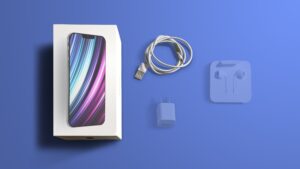Looking to charge your Schumacher battery charger but not sure how to go about it? You’re in the right place. Charging a Schumacher battery charger is a straightforward process that can be easily accomplished with a few simple steps. In this article, we will walk you through how to charge a Schumacher battery charger, giving you the knowledge and confidence to keep your charger operating optimally. So, let’s dive right in and explore the simple yet effective method of charging a Schumacher battery charger.
How Do You Charge a Schumacher Battery Charger?
A Schumacher battery charger is a reliable and efficient device for charging various types of batteries. Whether you need to charge a car battery, a motorcycle battery, or even a marine battery, a Schumacher battery charger can get the job done. In this article, we will guide you through the process of charging a Schumacher battery charger step by step.
Step 1: Safety Precautions
Before you begin charging your battery with a Schumacher charger, it is essential to prioritize safety. Taking the necessary precautions will ensure that you can charge your battery without any mishaps. Here are some safety measures you should follow:
- Wear protective gloves and safety glasses to protect yourself from acid spills or battery corrosion.
- Work in a well-ventilated area to avoid inhaling any potentially harmful gases.
- Ensure that the charger is unplugged before connecting it to the battery.
- Inspect the battery for any signs of damage, such as leaks or cracks. If you notice any defects, do not attempt to charge the battery and seek professional assistance.
Step 2: Gather the Necessary Materials
Before you can begin charging your battery, make sure you have all the required materials ready. Here’s a list of items you will need:
- Schumacher battery charger: Make sure you have the appropriate charger for your battery type.
- Battery: Ensure that the battery you want to charge is compatible with the Schumacher charger.
- Wrench or pliers: Depending on your battery, you may need a tool to disconnect the cables.
- Distilled water (if applicable): Some batteries require the addition of distilled water to replenish the electrolyte levels. Check your battery’s manual to determine if this is necessary.
Step 3: Select the Charging Mode
Schumacher battery chargers typically offer multiple charging modes to accommodate different battery types and charging requirements. To select the appropriate charging mode, follow these steps:
- Refer to the charger’s manual to identify the charging mode options available.
- Determine the battery type you are charging (e.g., AGM, gel, lead-acid, deep cycle).
- Choose the charging mode that matches your battery type on the charger’s control panel.
Step 4: Connect the Charger to the Battery
Now that you have chosen the correct charging mode, it’s time to connect the battery charger to your battery. Follow these steps:
- Locate the positive (+) and negative (-) terminals on your battery.
- Make sure the charger is unplugged before proceeding.
- Attach the red clamp from the charger to the positive (+) terminal of the battery.
- Connect the black clamp from the charger to the negative (-) terminal of the battery.
Step 5: Plug in the Charger and Start Charging
With the charger securely connected to the battery, you can now plug in the charger and begin the charging process:
- Double-check that all connections are secure and properly attached.
- Plug the Schumacher battery charger into a grounded electrical outlet.
- Switch on the charger, and it will start supplying power to the battery.
Step 6: Monitor the Charging Process
While the charger is doing its job, it is essential to keep an eye on the charging process to ensure everything is proceeding smoothly. Here’s what you should do:
- Observe the charger’s display or indicators to monitor the progress of the charging process.
- Keep an eye out for any warning lights or abnormal behavior.
- Regularly check the battery for signs of overheating or damage. If you notice anything concerning, stop the charging process immediately.
Step 7: Complete the Charging Process
Once the charging process is complete, it’s time to disconnect the battery from the charger. Follow these steps:
- Unplug the charger from the electrical outlet.
- Switch off the charger.
- Remove the black clamp from the negative (-) terminal of the battery.
- Detach the red clamp from the positive (+) terminal of the battery.
Step 8: Perform After-Charging Maintenance (If Applicable)
After successfully charging your battery, there may be some additional steps you need to take to ensure its longevity. Here are a few maintenance tasks you might consider:
- Inspect the battery for any signs of damage or corrosion and clean it if necessary.
- Check the electrolyte levels (if applicable) and add distilled water as recommended by the battery’s manufacturer.
- Securely reconnect the battery to its original location (e.g., in a vehicle).
By following these steps, you can effectively charge a Schumacher battery charger and extend the lifespan of your batteries. Remember to always consult the manual that comes with your specific charger and battery for any manufacturer-specific instructions or warnings. Stay safe and enjoy the convenience of a fully charged battery whenever you need it!
Frequently Asked Questions
How do you charge a Schumacher battery charger?
To charge a Schumacher battery charger, follow these steps:
Can I charge multiple batteries at the same time with a Schumacher battery charger?
Yes, most Schumacher battery chargers are designed to charge multiple batteries simultaneously. However, it is important to check the specific model’s instructions and limitations to ensure safe and optimal charging.
What types of batteries can be charged with a Schumacher battery charger?
Schumacher battery chargers are versatile and can charge a variety of battery types, including lead-acid, AGM, deep-cycle, gel-cell, and lithium-ion batteries. Be sure to check the charger’s specifications to ensure compatibility with your battery.
What is the recommended charging time for a Schumacher battery charger?
The recommended charging time can vary depending on the battery’s capacity and the charger’s output. It is best to refer to the battery manufacturer’s guidelines for optimal charging time. However, most Schumacher battery chargers have a built-in automatic charging algorithm that adjusts the charging rate based on the battery’s condition.
Can I leave a battery connected to a Schumacher charger indefinitely?
While Schumacher battery chargers are designed to safely maintain battery charge for extended periods, it is generally not recommended to leave a battery connected indefinitely. It is important to periodically check the battery and charger to ensure safe operation and prevent overcharging.
Are there any safety precautions I should follow when using a Schumacher battery charger?
Yes, it is crucial to follow these safety precautions when using a Schumacher battery charger:
- Read and follow the charger’s instruction manual carefully.
- Ensure proper ventilation during charging to prevent overheating.
- Disconnect the charger from the power source before connecting or disconnecting the battery.
- Protect yourself with safety goggles and gloves when working with batteries.
- Avoid exposing the charger to water or extreme temperatures.
Final Thoughts
To charge a Schumacher battery charger, follow these simple steps. First, locate the charger’s AC power cord and plug it into a standard electrical outlet. Next, ensure that the charger’s power switch is turned off. Then, connect the positive (+) lead of the charger’s clamps to the positive terminal of the battery and the negative (-) lead to the negative terminal. Once properly connected, switch on the charger and let it charge the battery until full. Charging times may vary depending on the battery’s size and condition. Remember to always follow the manufacturer’s instructions for your specific Schumacher battery charger model. Now you know how to charge a Schumacher battery charger.



